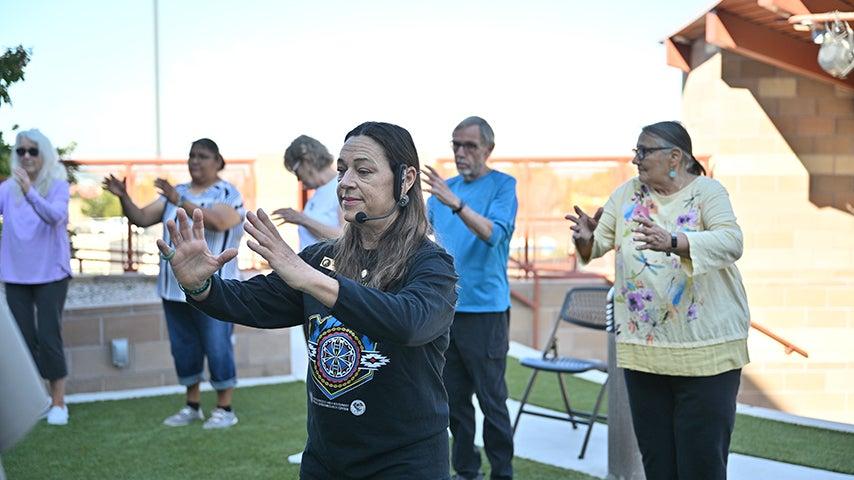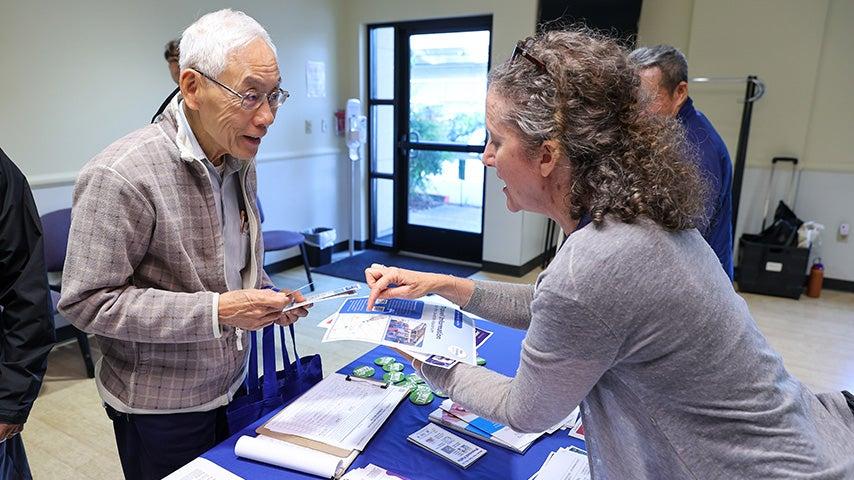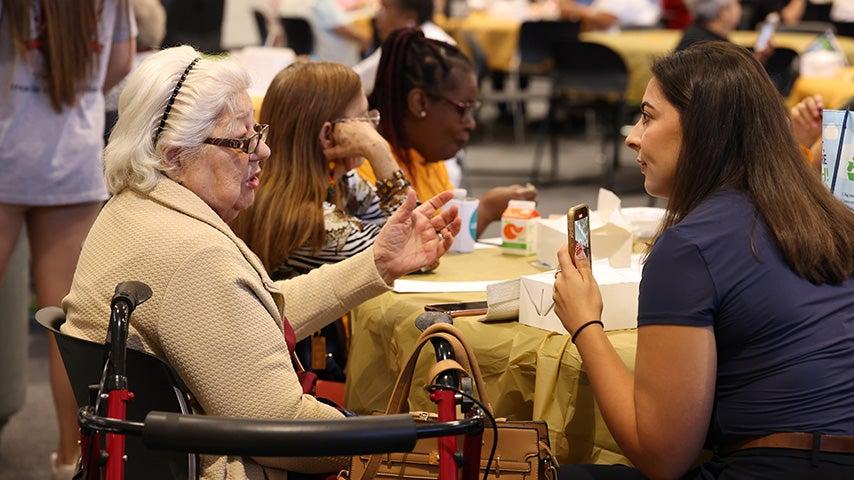
Related Topics
Planning for a falls prevention awareness and screening fair can be a fun project—lmportant community resources that play a role in falls prevention will be in one central location. But planning any kind of health fair can also be stressful due to so many moving parts. Here's how to help ensure your fall prevention awareness and screening fair is a success.
What is a health fair?
A health fair is an organized educational event focused on basic preventive care for people in the community covering general health topics or a specific theme or issue, such as falls prevention.
How do I secure funding for a health fair?
It's OK if you are working with a tight budget; you can solicit help and support from the community. Some ideas to find funding for your event:
- Determine the total funding needs for this event—Understand what budget you are working with and figure out the total cost of this health fair for all equipment and supplies.
- Find business sponsorships—Reach out to local businesses to see if they are willing to sponsor the health fair in exchange for their name and logo on marketing flyers.
- Seek in-kind donations from businesses—Retailers such as Walmart, Wegmans, Kroger, and Publix support community organizations and programs by donating edible goods, refreshments, and gift cards. Speak to your local business about potential partnerships.
- Recruit community members to serve as booth exhibitors—Many health care professionals and others are willing to volunteer their time and services.
Where do I start when planning this health fair?
Texas A&M's comprehensive Health Fair Planning Guide explains the steps to planning a health fair from start to finish. Some initial steps to get started:
- Identify a goal for this health fair—For falls prevention awareness and screening fairs, a goal can be to increase awareness and educate the community about falls among older adults and how community resources can help prevent falls.
- Identify a chair and co-chair—These two people will share responsibilities for the health fair and ensures the planning and planners follow through.
- Form a health fair committee—Recruit committee members from various fields who can provide support and ideas that meets the needs of people in the community and promote this event to their network for better attendance.
- Determine the target audience—For falls prevention awareness and screening fairs, target participants are older adults, family, caregivers, and others who are interested in older adult fall prevention.
- Pick a date and timeframe—Weekends work best for community volunteers and older adults for a successful fair with maximum engagement.
- Select an easily accessible location—Health fairs can take place at a large parking area or well-known buildings such as schools, senior centers, and community centers. Take into consideration restroom facilities and the weather if the location is outdoors.
How do I promote and market this health fair to my community?
Moda Health has a list of ideas for marketing your health fair. A few ideas to consider:
- Design a flyer to promote the health fair—Flyers or handouts that are visually appealing and include specific details about the health fair will help boost attendance.
- Use traditional media—Run a short column in your local newspaper to promote the health fair.
- Leverage digital media—Promote the health fair on social media, such as Facebook, Twitter, LinkedIn, NextDoor, and emails.
- Tap into your community—Many retailers and restaurants have a community board where you can post flyers to promote the health fair.
What activities should I have at the falls prevention awareness and screening fair?
Activities that are engaging and present information in a clear and creative way will help people understand about falls prevention and how risk of falls can be reduced. The Society of Trauma Nurses offers this list of activities for booth exhibitors that cover such categories as mobility, vision, medication, and home environment. Some ideas to involve your community volunteers:
- An occupational therapist or occupational therapy students to provide information about home modifications
- A physical therapist or physical therapy students to provide balance screenings
- A pharmacist to review medications and share information on how they can affect the risk of falls
- A local senior center or area agency on aging to connect participants to available resources in the community. They can also help with falls prevention program demonstrations; popular evidence-based falls prevention programs include A Matter of Balance, Tai Chi, and Bingocize.
- An associate at the sporting goods store who can provide more information about shoes and other personal exercise items
How will I know if people learned something from the health fair?
- Set up a registration/sign in table—Have a registration or sign in table at the entrance of the health fair to keep track of all participants. Collect people's name, phone number, email address, and perhaps how they heard about the event. You can send a survey after the event to solicit feedback about the health fair and the booths.
- Use a bingo card to track booth popularity—Create a bingo card with all the booth exhibitor’s name and logo and a section for the participants’ name and contact information. The booth exhibitor will sign/stamp the card next to their logo after the participant has completed a screening or activity. Participants return the bingo card before they leave and will be entered into a raffle for a grand prize. The stamps on the card will show you which booths they stopped by.
Preparing for a fall prevention awareness and screening fair is a huge endeavor, so be mindful of the time needed to plan for this event. And keep in mind that you have the support of your community. After all, falls prevention is a team effort.
This project was supported, in part by grant number 90FPSG0051 from the U.S. Administration for Community Living, Department of Health and Human Services, Washington, D.C. 20201. Grantees undertaking projects under government sponsorship are encouraged to express freely their findings and conclusions. Points of view or opinions do not, therefore, necessarily represent official Administration for Community Living policy.



